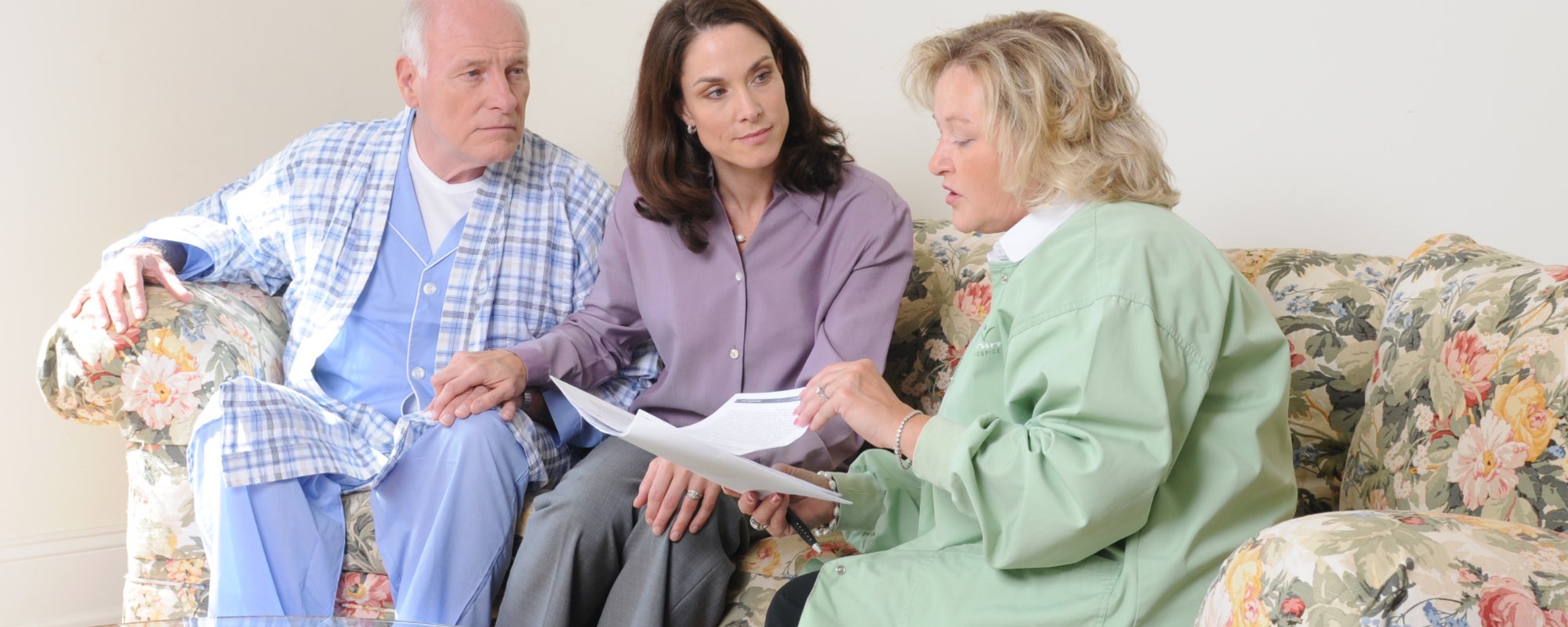![]() PRIMARY PATIENT CAREGIVER is typically a family member who helps make decisions for the terminally ill individual.
PRIMARY PATIENT CAREGIVER is typically a family member who helps make decisions for the terminally ill individual.
Primary patient caregiver can pick up where the hospice team and other medical services end, providing:
| Personal Care | Light Housekeeping | Medication Reminders | Errands |
| Personal Care | |
| Light Housekeeping | |
| Medication Reminders | |
| Errands |

If a loved one is facing a terminal diagnosis, then hospice and palliative care in the privacy of their home or place of residence, might be the answer.
Eligibility is determined by a physician’s evaluation.
Hospice Eligibility Guidelines:
• Patients diagnosed with a life-limiting illness:
Cancers,
Cardiac/Heart Disease,
Alzheimer’s/Dementia,
Pulmonary/Lung Disease,
Stroke or Coma,
ALS,
Liver Disease,
Renal Disease,
HIV/AIDS
• Patients and families have accepted treatment goals that focus on symptom management rather than curative treatments
• Other indications that might help to support hospice eligibility include: Frequent hospitalization or ER visits, progressive weight loss, deteriorating mental state, recurrent infections, other specific declines in health or physical condition.

Hospice is a holistic care philosophy that is focused on providing comfort not only to terminally ill patients, but to the patient’s caregivers, family, and friends as well, by providing:
• Pain and symptom management services: Hospice aims to make the patient as comfortable as possible, remain in control of their life and enjoy their life.
• Nursing services: Regular visits by highly-trained nursing staff that provide attentive care and pain management.
• Hospice Aides services: Regular home visits to help your loved one perform personal care activities.
• Psychosocial services: The social worker meets with your loved one, caregivers, and family to provide counseling, emotional support, and to help navigate through the paperwork, financial tasks, and other duties involved in the end-of-life journey.
• Spiritual services:The chaplain helps your loved one, and all connected to them, navigate the spiritual end-of-life journey.
• Volunteer services: Trained volunteers help patients and caregivers by providing companionship, assistance, and support.
• Bereavement services: Helps your loved one’s family and friends throughout the patient's illness and to process the passing in a healthy manner up to 13 months (more, if needed) following death.
• Medical equipment, supplies and medications related to the terminal illness for comfort and symptom management.
• Physical, occupational, speech, music, and other therapies as indicated in the plan of care

The healthcare provider will do an assessment to determine which level of hospice care is appropriate for you. Each level of care meets specific needs,
and every hospice patient is unique.
• Routine Care: Routine home care is the basic level of hospice care provided in your home, adult care home, assisted living/memory care,
or nursing home. Hospice team visits and oversees the plan of care.
• Continuous Care: If your loved one is experiencing a medical crisis and severe symptoms such as unrelieved pain or shortness of breath a
nurse will stay with the patient for a few hours to frequently manage medications and reassess the uncontrolled symptoms.
• General Inpatient: If your loved one’s needs intensify (examples includes severe pain, respiratory distress, bleeding), the hospice team
may recommend this level of care and will transfer your loved one to the inpatient level of care at a nursing home, hospital, or hospice unit to receive further hospice care.
• Respite Care: This level of hospice care is provided on an occasional basis and offers a planned, short-term break
for unpaid family caregivers from the challenges of assisting a loved one with an advanced illness (maximum 5 days each billing period).

If your loved one wishes to receive hospice care and have the costs covered by the federal Medicare hospice benefit program, there are a series of requirements that must be met to determine eligibility.
• Your loved one must have Medicare Part A coverage to quality for the Medicare hospice benefit.
• Your loved one’s primary physician and the hospice’s medical director must certify that your loved one has 6 months or less to live.
• Your loved one, your loved one’s family, or the person legally designated to speak on your loved one’s behalf, must state the acceptance of palliative care instead of seeking curative measures for the terminal illness.
• Your loved one must formally elect to pursue hospice care with the hospice organization.
Upon qualification, and after selection of a hospice program that best fits your loved one’s needs, the Medicare hospice benefit covers many of the costs associated with your loved one’s end-of-life care.
Your loved one’s original Medicare coverage will continue to cover the costs for health problems that are not directly associated with the terminal illness.
Medicaid coverage can be obtained and used alongside your loved one’s existing Medicare coverage.
While each state’s Medicaid program may have variances concerning eligibility, the majority of states require the following be met in order to qualify for the Medicaid hospice benefit:
• Your loved one’s physician must certify that your loved one is terminally ill.
• Your loved one, your loved one’s family, or the person legally designated to speak on your loved one’s behalf, must state that they are accepting palliative care instead of seeking curative measures for their terminal illness.
• Your loved one, your loved one’s family, or the person legally designated to speak on your loved one’s behalf, must officially state your choice to pursue the hospice benefit by signing a hospice election form.
• Each time your loved one’s physician reviews their Medicaid eligibility, the physician must certify that your loved one’s life expectancy is reduced, as defined by state guidelines, as a result of the terminal illness.
Electing to use the Medicaid hospice benefit does not eliminate Medicaid coverage for symptoms or conditions not associated with the terminal illness.
The majority of private insurance plans offer coverage for hospice and other end-of-life care services.
These plans often cover the full cost of the services provided by your loved one’s hospice organization.
Most private insurance providers, at a minimum, require that your loved one meet two qualifications for hospice care.
• Both your loved one’s attending physician and the hospice’s medical director must certify that your loved one is terminally ill and has a reduced life expectancy of less than 6 months. Your loved one’s private insurance, however, may have different guidelines that allow for qualification for hospice care within a timeframe much sooner than the last 6 months of life.
• Your loved one and/or family must be aware of the prognosis of terminal illness and elect to not seek curative measures.
Your loved one’s original insurance coverage will continue to cover the costs for health problems that are not directly associated with the terminal illness.
Charity care is hospice care that is provided by the hospice organization free of charge to patients who are unable to qualify for Medicare, Medicaid, or private insurance, and lack the resources to cover the costs of hospice care. Charity care funds are often provided by the hospice organizations themselves, charitable donations, grants, or other community sources.